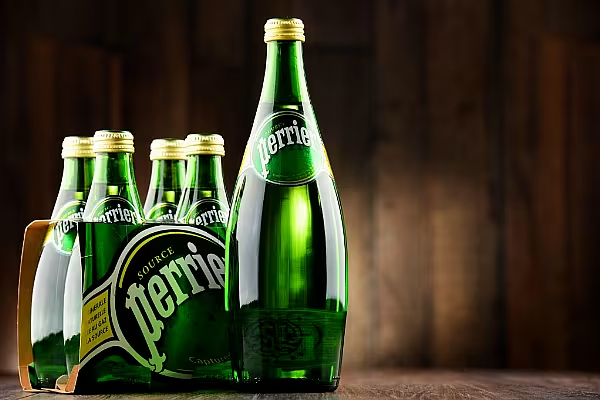Perrier opened a new production line at its plant in the south of France last month, speeding up the process of filling green, teardrop-shaped bottles with bubbling mineral water for shipment around the world.
Now the brand’s owner, Nestlé SA, is ramping up production further, planning its biggest factory upgrade since it acquired Perrier a quarter-century ago. The Swiss giant said that it plans to spend €200 million ($223 million) to add three similar lines, bringing the total to 15, increasing employment by 200 and lifting output by more than 40% through 2020.
By sticking with the French brand through the tumultuous years that followed a 1990 safety scandal, Nestlé offers a riposte to Dan Loeb, whose activist hedge fund Third Point has disclosed a $3.5 billion stake in Nestlé, saying that the food giant should boost profits by casting aside underperforming businesses. Rival Unilever, which earlier this year fended off a takeover bid from Kraft Heinz Co., has championed a similarly patient approach to brand-building.
Perrier’s popularity in the 1980s made it the liquid equivalent of a mint-green Lacoste polo shirt: the perfect statement of the times, but desperately out of fashion a few years later, when yuppie tastes moved on. Perrier all but disappeared from Riviera terraces after the discovery of the carcinogen benzene in some bottles. Now it’s being embraced by millennial hipsters, and Nestlé says that there’s a bright future for the brand, as it targets growth in Asia and consumers seeking an upmarket alternative to soda.
Growth Engine
“Water can be, and will be, a growth engine for Nestlé,” said Maurizio Patarnello, chief executive officer of Nestlé Waters, speaking before Loeb’s investment was disclosed. “Water premiumisation is the most promising segment. We see this trend accelerating everywhere, not just in the Western countries.”
Nestlé’s move to expand Perrier marks a striking turnabout from the mid-2000s, when then CEO Peter Brabeck-Letmathe floated the idea of selling Perrier or moving production in response to labour disputes. It’s one of several of the Swiss company’s brands that have turned successful after a disappointing start.
Nespresso languished for years after Nestlé introduced it in the 1980s, with consumers balking at having to buy special coffee-makers and pricey capsules. European sales took off after Nestlé created branded boutiques to sell the system. The US lagged until the company introduced its VertuoLine in 2014, to meet American demand for bigger cups, and until long-time pitchman George Clooney agreed to promote the brand in the US in 2015.
Hot Pockets
Patience hasn’t always paid off for Nestlé. Sales of its Hot Pockets microwaveable sandwiches have suffered for about a decade, and attempts to revamp the brand with better cuts of meat failed to drive any long-term rebound.
New Nestlé CEO Mark Schneider has moved to streamline the company by putting its US confectionery business, including its Baby Ruth and Butterfinger bars, up for sale. Although water is the company’s lowest-margin unit, Schneider sees it as a growth pillar, alongside coffee and pet food, as he shifts the snack giant toward healthier fare.
Perrier is expanding its range of flavoured waters to give soda-drinkers a healthier option, as Coca-Cola Co. and PepsiCo, Inc. extend their water offerings. Lemon, lime and other flavours make up about a quarter of the brand’s sales, and this year, it’s adding watermelon.
The global bottled-water market will grow by more than 20%, to about $231 billion, by 2021, after swelling 40% in the last five years, according to Euromonitor. Rapid growth has prompted a backlash, with groups like Ban the Bottle contending that packaged water is environmentally damaging and financially wasteful.
Nestlé is the world’s largest water-bottler and Perrier is the biggest carbonated brand, with a 2.3% share of volume, according to Euromonitor. Alain Oberhuber, an analyst at MainFirst Bank AG, estimates Perrier sales at more than 1 billion Swiss francs ($1 billion) last year.
News by Bloomberg, edited by ESM. Click subscribe to sign up to ESM: The European Supermarket Magazine.














